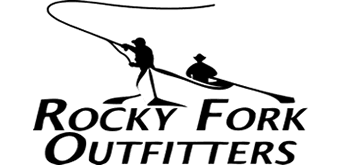Rivers We Fish
Generally, I’d rather fish the Stillwater River then any other body of water found along the Beartooth Mountain Front. However, the Yellowstone, the Rock Creeks (Main, Lake, and West), the Rosebuds (East and West) and the Clark’s Fork each have their unique charm and characteristics. Also, the Beartooth Mountains contain approximately 300 lakes, over half of which contain trout.
Heck, I love ‘em all, and so will you.
The vast majority of our guided trips are on the Stillwater and Yellowstone Rivers. Here's a brief description of what these two rivers has to offer.
For more information on all the local rivers, download
Everything You Ever Wanted To Know About Fishing The Beartooth Area
Stillwater River
In my opinion, the Stillwater is the finest fishery in the State of Montana and it is relatively unknown. With a little forethought, you can have the place to yourself. While the fish are typically not huge, they are plentiful with approximately 3,000 fish per river mile. Browns predominate in the upper reaches, while rainbows comprise about 70 percent of the lower rivers’ trout population. During the spring, the fish average 14 to 16 inches due to an influx of large spring spawners from the Yellowstone River. During the summer, the typical fish is approximately 12 to 13 inches long. The months of March, April and early May are incredible fishing if you know the river and its moods.
The upper river runs from the Forest Service boundary to the confluence of the Rosebuds. The lower river extends from this point to the confluence of the Yellowstone. River characteristics differ between these two segments. The upper river is faster, half the size of the lower river, and is more difficult to wade. Wading on the Stillwater can challenge even the most experienced angler. The river bottom consists of bowling ball sized cobbles and larger boulders. During the summer and fall, they become coated with algae growth and are very slick until the algae die in late September. During the run-off and immediately after, wade fishing is very difficult due to high water and the challenging wading conditions, although the fishing is excellent if you are floating.
Yellowstone River
The Yellowstone is by all standards, a very large trout river. Many people take one look at the Yellowstone and then drive somewhere else. This is a serious mistake! The “Stone” contains some of the largest and meanest trout in the State of Montana. The number of fish over 20 inches in this river is very impressive. Not only are the trout long, but they are wide and deep as well. The large fish in the Stone reflect the high productivity of this river. If you are looking for a truly large trout, this is the place to try your luck.
The best fishing in this river is usually found in the time period between late July and mid November. However, spring (pre-runoff) fishing can be very productive on warm overcast windless days. Fish in the Yellowstone are not distributed evenly throughout the river. Focusing your fishing at the junction of the riffles and pools will pay dividends. Forget the long flat stretches of water between the riffle and pool junctions. Wading the Yellowstone is relatively easy. The bottom usually consists of sand and gravel, not the large cobbles and boulders found on other area rivers. However, don’t become complacent while wading the Stone, the current is very strong and deep in many places.

 Subscribe Us
Subscribe Us Contact Us
Contact Us Friend Us
Friend Us